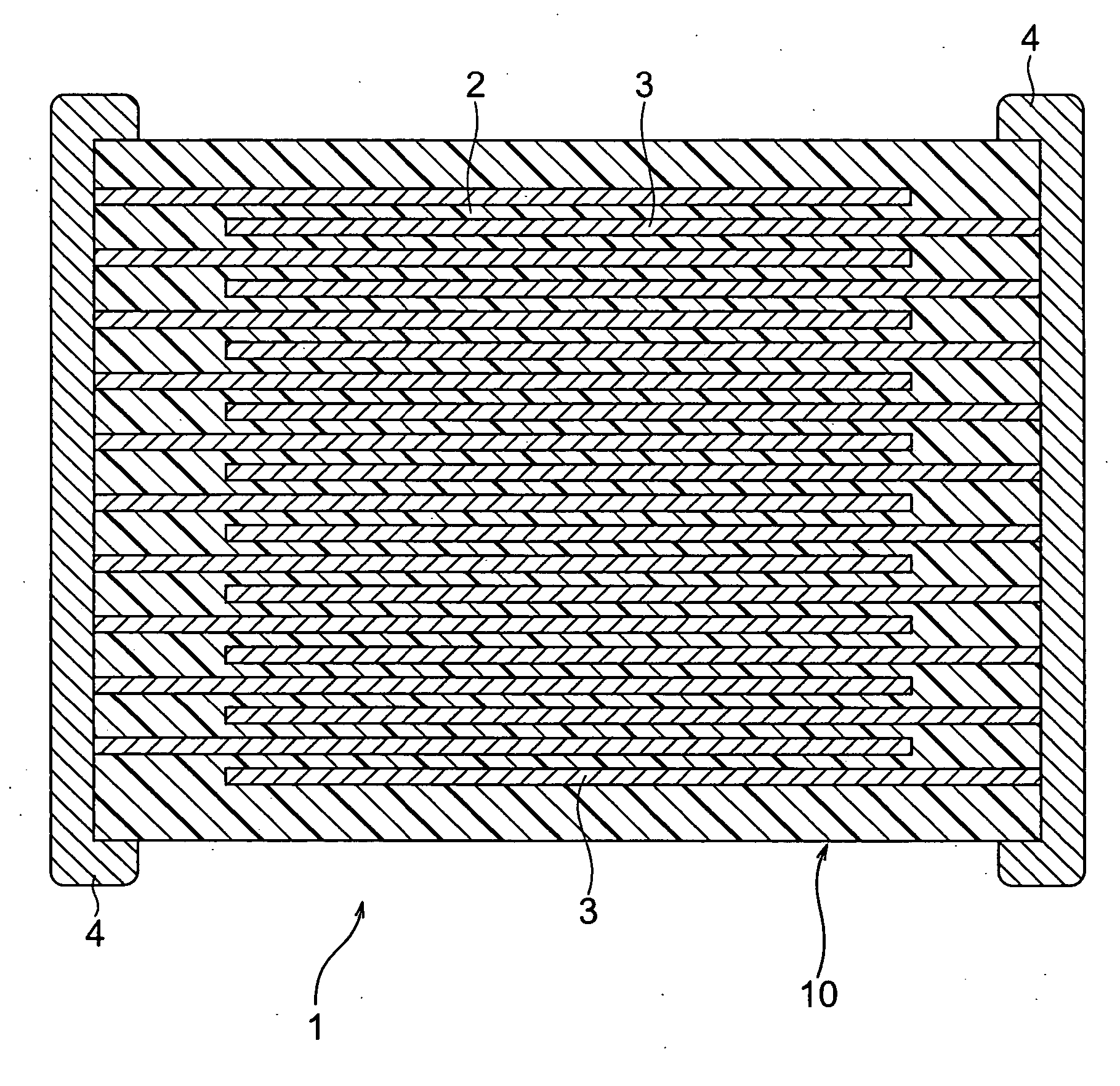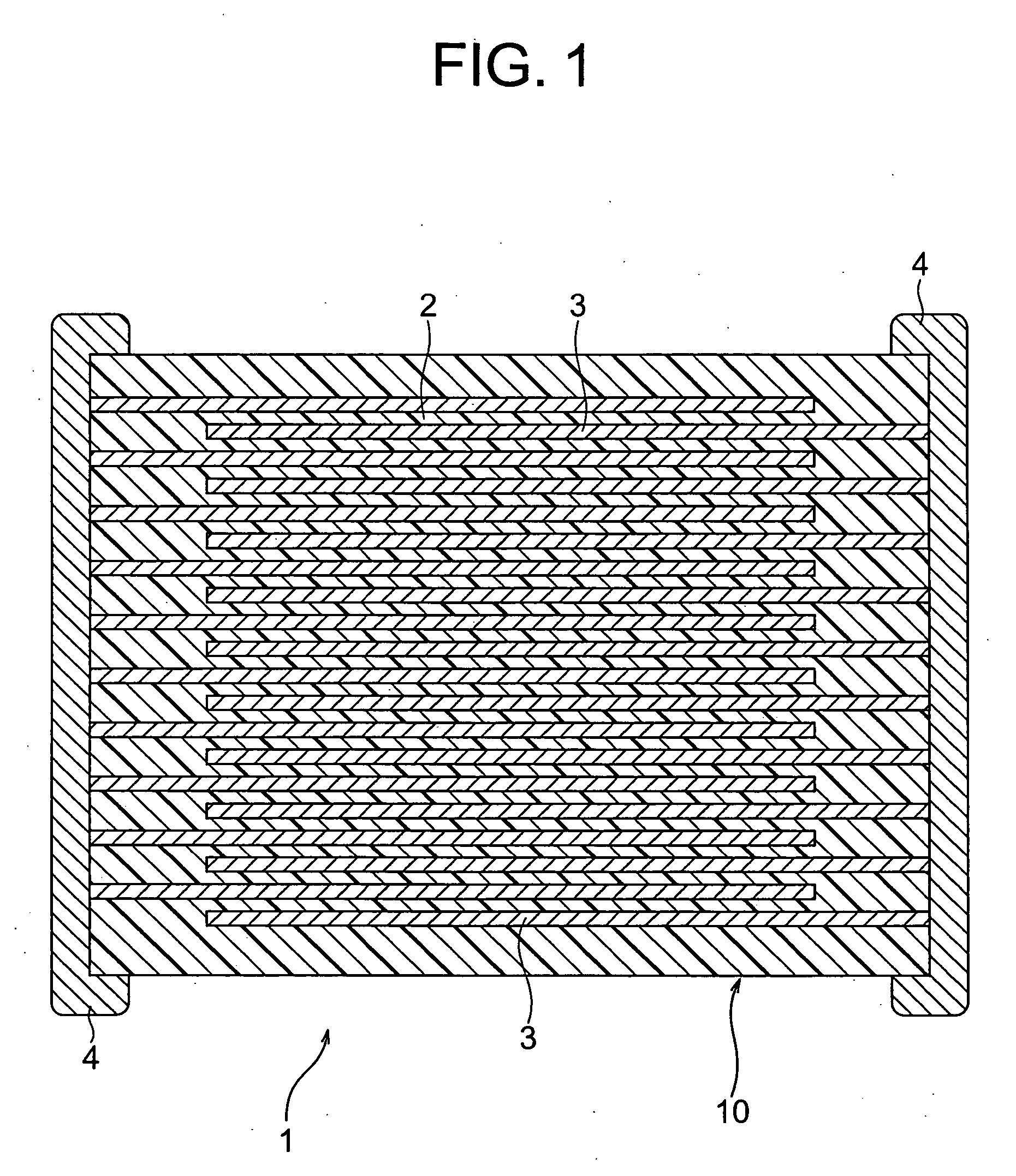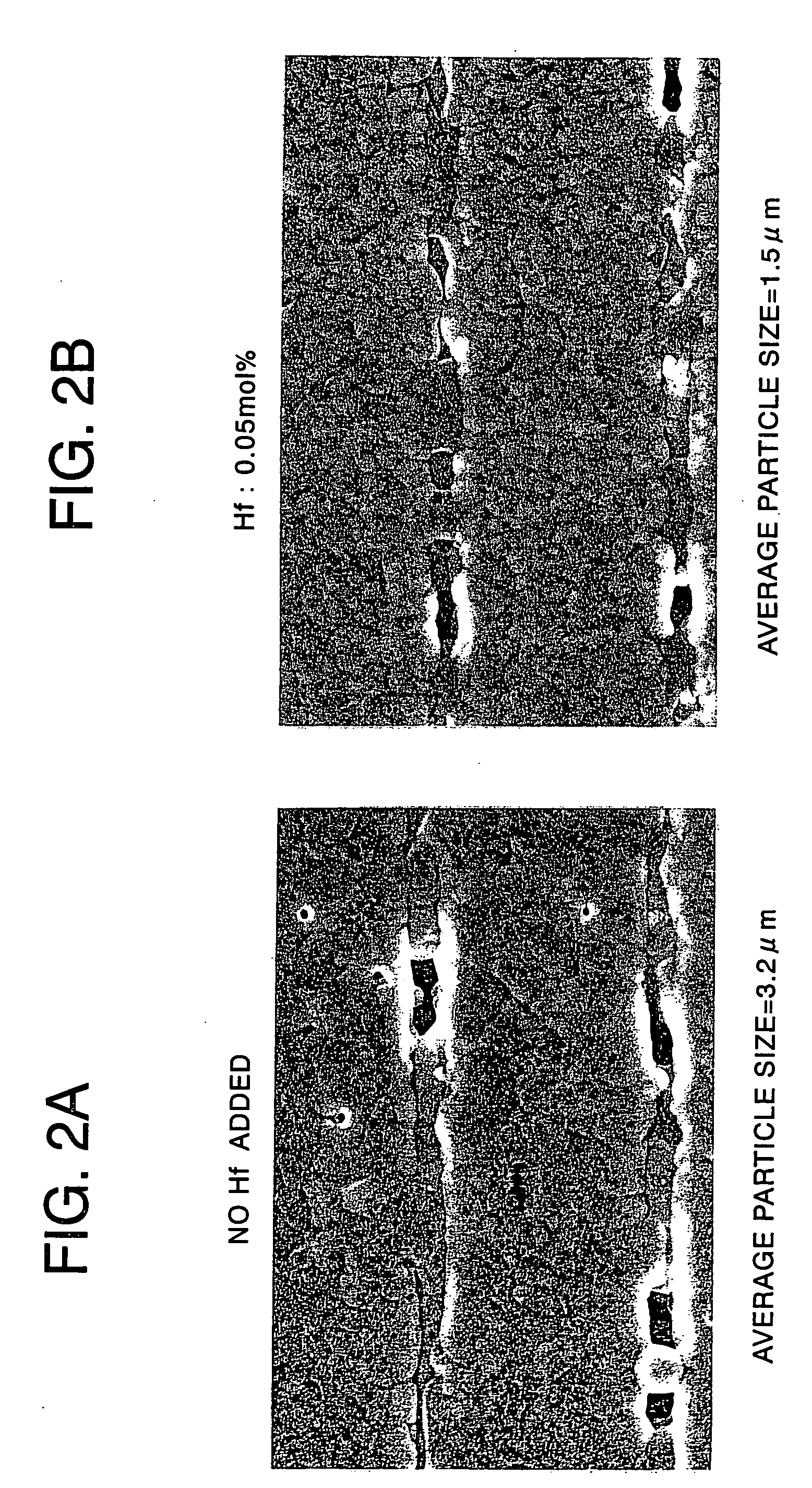Dielectric porcelain composition, electronic device and methods for producing these
- Summary
- Abstract
- Description
- Claims
- Application Information
AI Technical Summary
Benefits of technology
Problems solved by technology
Method used
Image
Examples
example 1
[0132] First, as starting materials for producing a dielectric material, main component materials (SrCO3, CaCO3, TiO2, ZrO2 and HfO2) and subcomponent materials (including a glass component) each having an average particle diameter of 0.1 to 1.5 μm were prepared. As the subcomponent materials, carbonate (MnO3 and BaCO3) or oxides (Al2O3, SiO2 and Y2O3, etc.) were used.
[0133] After weighing the materials, so that a composition after firing would be the composition shown in Table 1 below, water as a medium was added to the materials and mixed by a ball mill for 16 to 40 hours to perform high dispersion mixing. After that, the mixture was dried, then, calcinated under a condition of 1100 to 1300° C. for 2 to 4 hours. Thus obtained calcinated substance was subjected to wet grinding by a ball mill and dried.
[0134] With 100 parts by weight of the thus obtained dried dielectric material, 4.8 parts by weight of an acrylic resin, 40 parts by weight of methylene chloride, 20 parts by weight...
example 2
[0164] Other than weighing the materials, so that a composition after firing would be the composition shown in Table 3 below, capacitor samples were produced in the same way as in the example 1 and the same evaluation was made as that in the example 1. The results are shown in Table 4.
TABLE 3Subcomponent 1Subcomponent 2mol % withmol % with respectMain Componentrespect toGlass Componentto 100 mol ofMole Ratios100 mol[(BavCa1−v)O]wSiO2AddingMain ComponentSamplein [(CaxSr1−x)O]m[(TiyZr1−y−zHfz)O2]of Main ComponentMole RatiosQuantityAddingNo.x1 − xy1 − y − zzmMnOAl2O3v1 − vwmol %AdditiveQuantity260.70.30.050.90.05110.50113——270.70.30.050.90.05110.50.10.913——280.70.30.050.90.05110.51013——※290.70.30.050.90.05110.50.50.50.43——300.70.30.050.90.05110.50.50.50.53——310.70.30.050.90.05110.50.50.543——※320.70.30.050.90.05110.50.50.54.13——※330.70.30.050.90.05110.50.50.510.4——340.70.30.050.90.05110.50.50.510.5——350.70.30.050.90.05110.50.50.5115——※360.70.30.050.90.05110.50.50.5116——
[0165]
TABLE 4El...
example 3
[0170] Other than weighing the materials, so that a composition after firing would be the composition shown in Table 5 below, capacitor samples were produced in the same way as in the example 1, and the same evaluation was made as that in the example 1. The results are shown in Table 6.
TABLE 5Subcomponent 1Subcomponent 2mol % withmol % with respectMain Componentrespect toGlass Componentto 100 mol ofMole Ratios100 mol[(BavCa1−v)O]wSiO2AddingMain ComponentSamplein [(CaxSr1−x)O]m[(TiyZr1−y−zHfz)O2]of Main ComponentMole RatiosQuantityAddingNo.x1 − xy1 − y − zzmMnOAl2O3v1 − vwmol %AdditiveQuantity※370.70.30.050.90.05110.50.50.413Mg0.01380.70.30.050.90.05110.50.50.413Mg0.02390.70.30.050.90.05110.50.50.413Mg0.5400.70.30.050.90.05110.50.50.413Mg1.5※410.70.30.050.90.05110.50.50.413Mg2420.70.30.050.90.05110.50.50.413Sc0.5430.70.30.050.90.05110.50.50.413Y0.5440.70.30.050.90.05110.50.50.413La0.5450.70.30.050.90.05110.50.50.413Ce0.5460.70.30.050.90.05110.50.50.413Pr0.5470.70.30.050.90.05110.50...
PUM
| Property | Measurement | Unit |
|---|---|---|
| Temperature | aaaaa | aaaaa |
| Length | aaaaa | aaaaa |
| Particle diameter | aaaaa | aaaaa |
Abstract
Description
Claims
Application Information
 Login to View More
Login to View More - R&D
- Intellectual Property
- Life Sciences
- Materials
- Tech Scout
- Unparalleled Data Quality
- Higher Quality Content
- 60% Fewer Hallucinations
Browse by: Latest US Patents, China's latest patents, Technical Efficacy Thesaurus, Application Domain, Technology Topic, Popular Technical Reports.
© 2025 PatSnap. All rights reserved.Legal|Privacy policy|Modern Slavery Act Transparency Statement|Sitemap|About US| Contact US: help@patsnap.com



